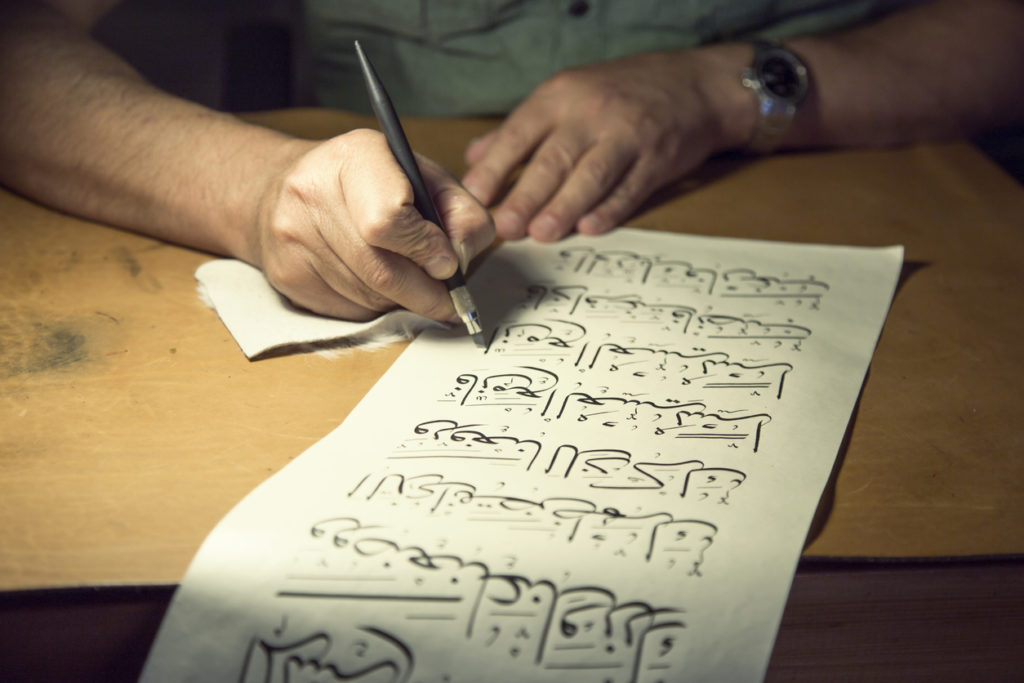السلام عليكم ورحمة الله
Continuing from Qawaa’id fee al-Imlaa by Shaykh Uthaymeen رحمه الله there are four things that are pronounced but not written (i.e. you hear them, but won’t see them):
- The alif in:
- الله (Allah)
- إله (ilaah [“deity”])
- لكِن (laakin [“however”])
- ثَلثمِائة (thalaathu mi’ah [“three hundred”])
- ذا1 when it’s the ل used for distance as in such ذلِكَ (dhaalika [“that’]), otherwise you will see it written as in ذاك
- The ها used for alerting when connected to an اسم إشارة (demonstrative pronoun) that does not start with ت, as in هذا (haadha [“this”]).
- If the pronoun starts with ت, you will see the ا, as in هاتانِ (haataani [“these two” for the feminine])
- One of the two و’s in the words طاوس (Tawoos) and داود (Dawood)2
- The ال that comes between two ل’s as in لِلَّهوِ
- The ل in the اسم موصول (relative pronoun), that is singular or for the masculine pronoun, as in الّذِي (alladhi) and الَّذَيْنَ (alladheena).
- In the dual or feminine plural, you do see the ل, as in اللّذانِ (alladhaani) and اللاتِي (allaatee)
Some extra points
- The ا in يا is not written when it comes before:
- A name that starts with أ as in يأحمَد (“O Ahmad”)
- أهل as in يأهلَ الكِتابِ (“O people of the Book”), أيّ as in يأيُّها الرَّجُل (“O man”), and أيَّة as in يأيّتُها النَّفَس المُطْمَئِنّة (“O tranquil soul”)
- There are some letters that are sometimes omitted in both pronunciation and writing as in:
- The ا in the ما used for questioning if it is preceded by a something that puts it in jarr, as in فِيمَ (“In what?”), عَلامَ (“Upon what?”), حَتّامَ (“Until what?”)
- The ا in أنا if ها comes before it and ذا for pointing comes after it, as in هأنذا (“Here I am”)


